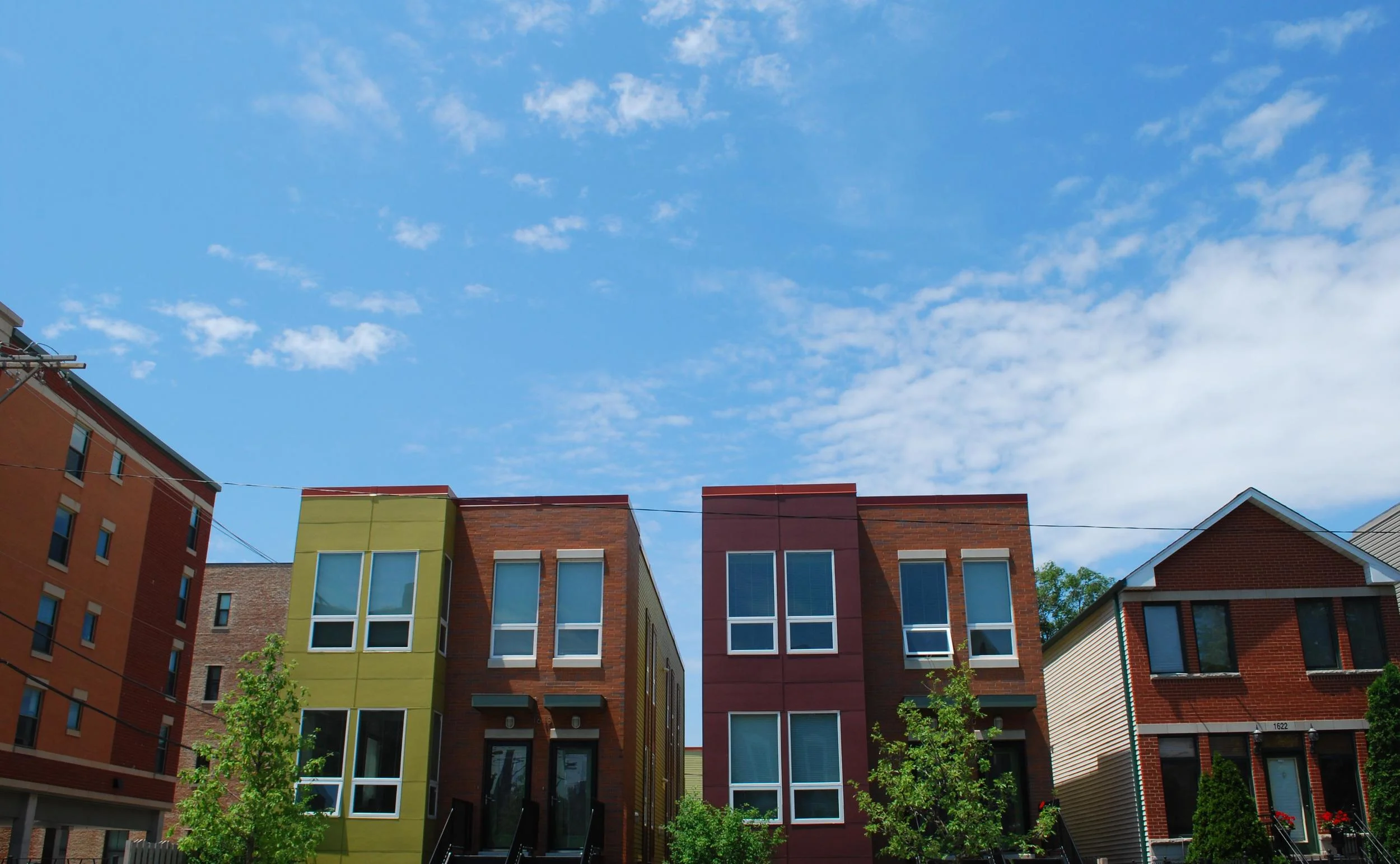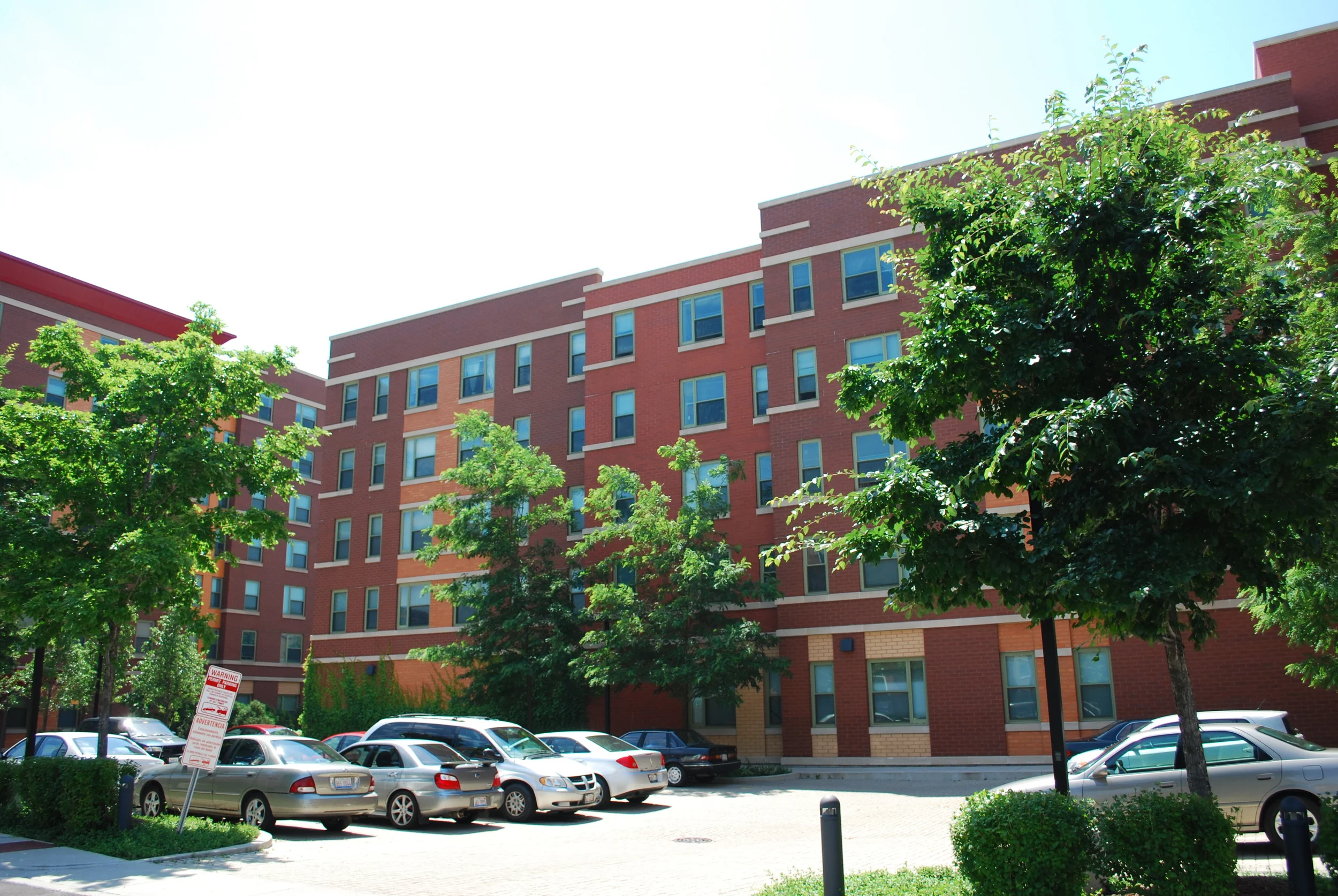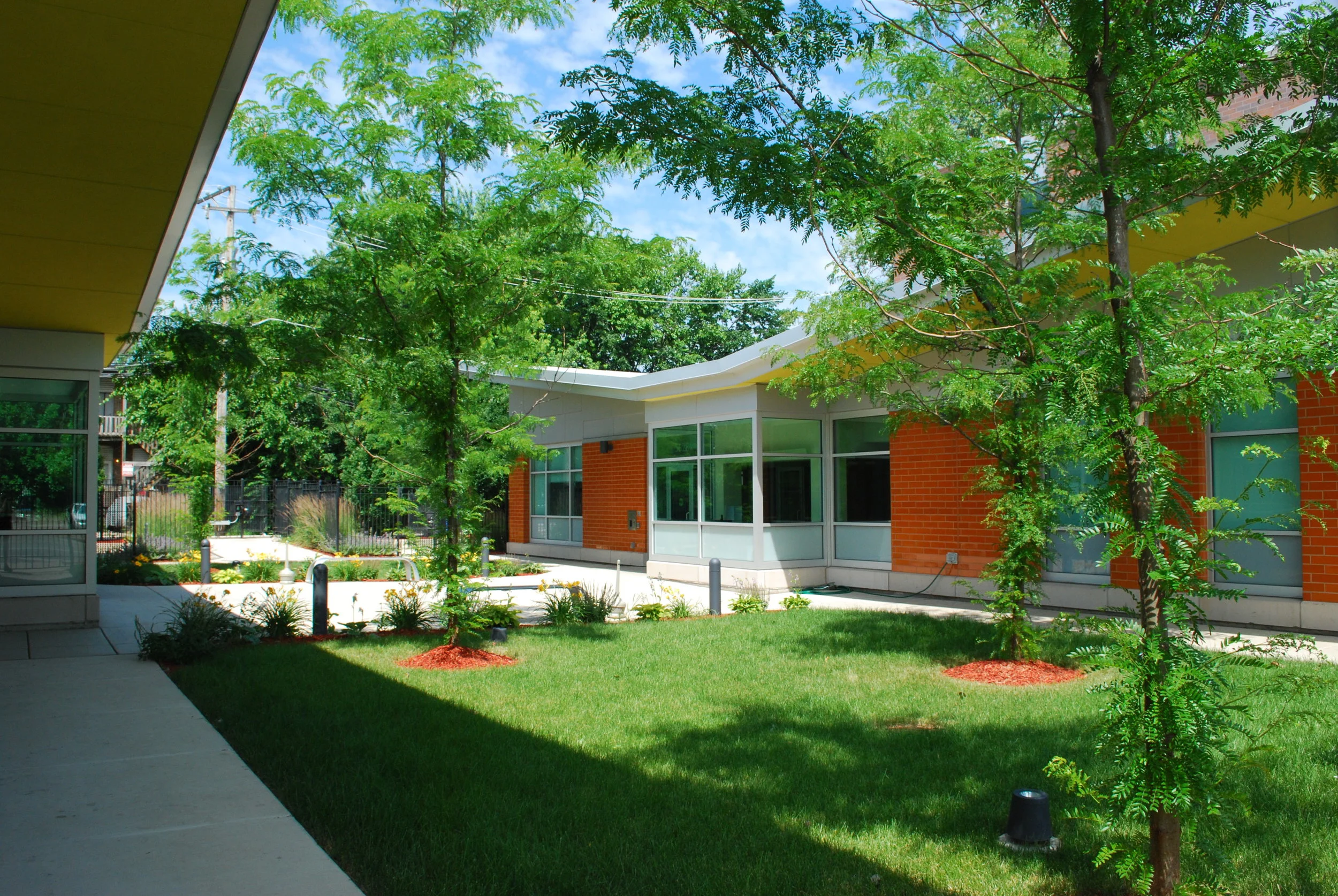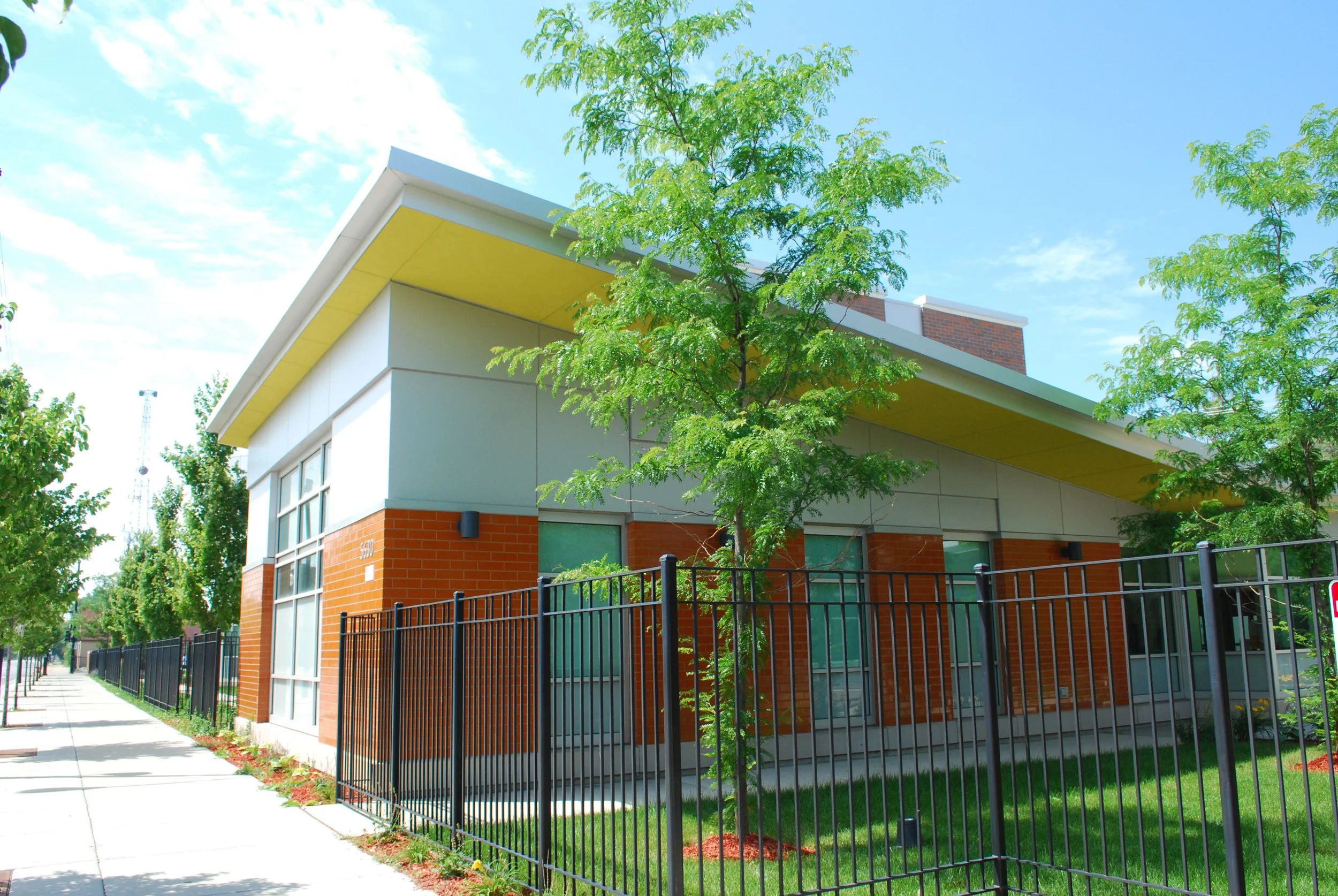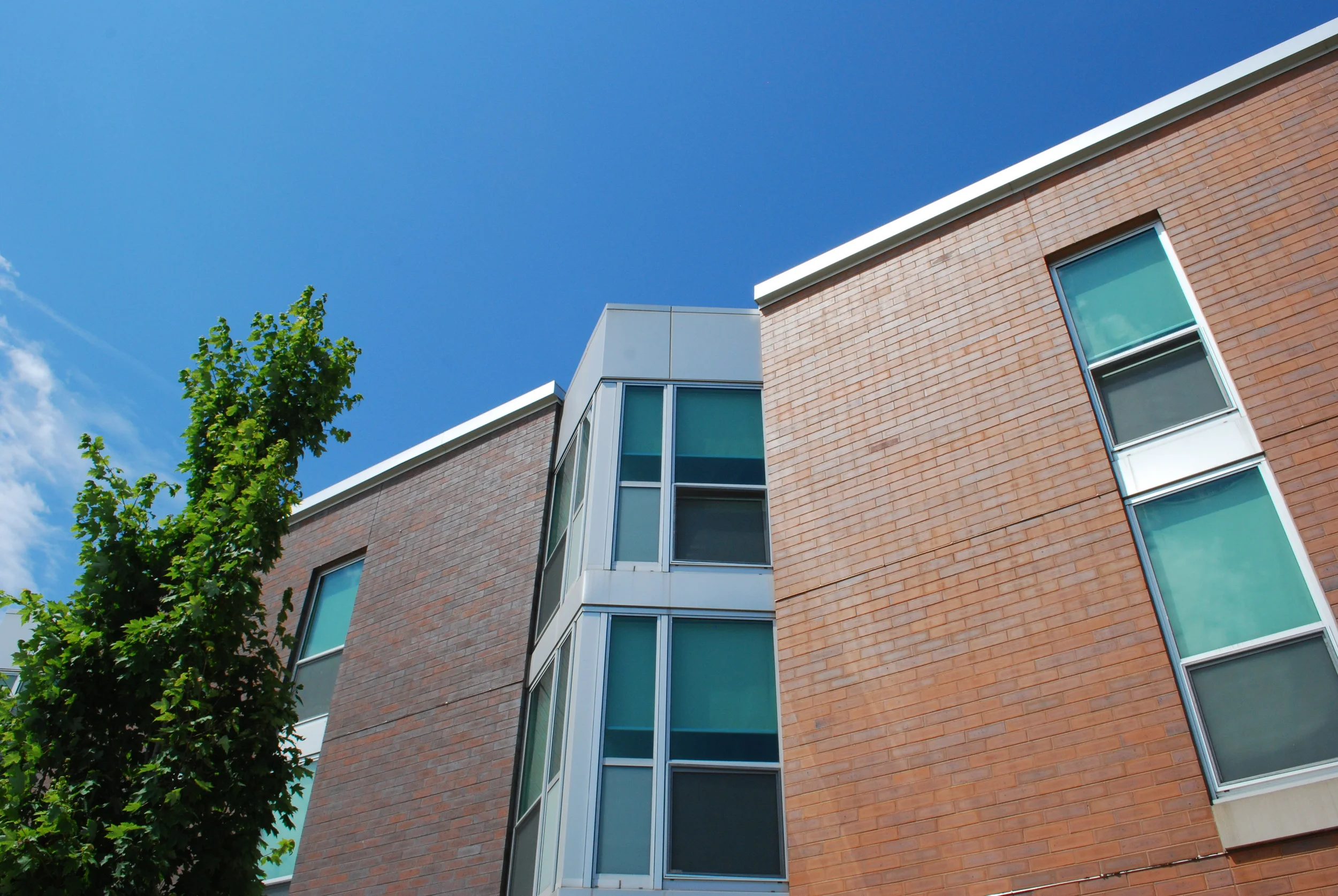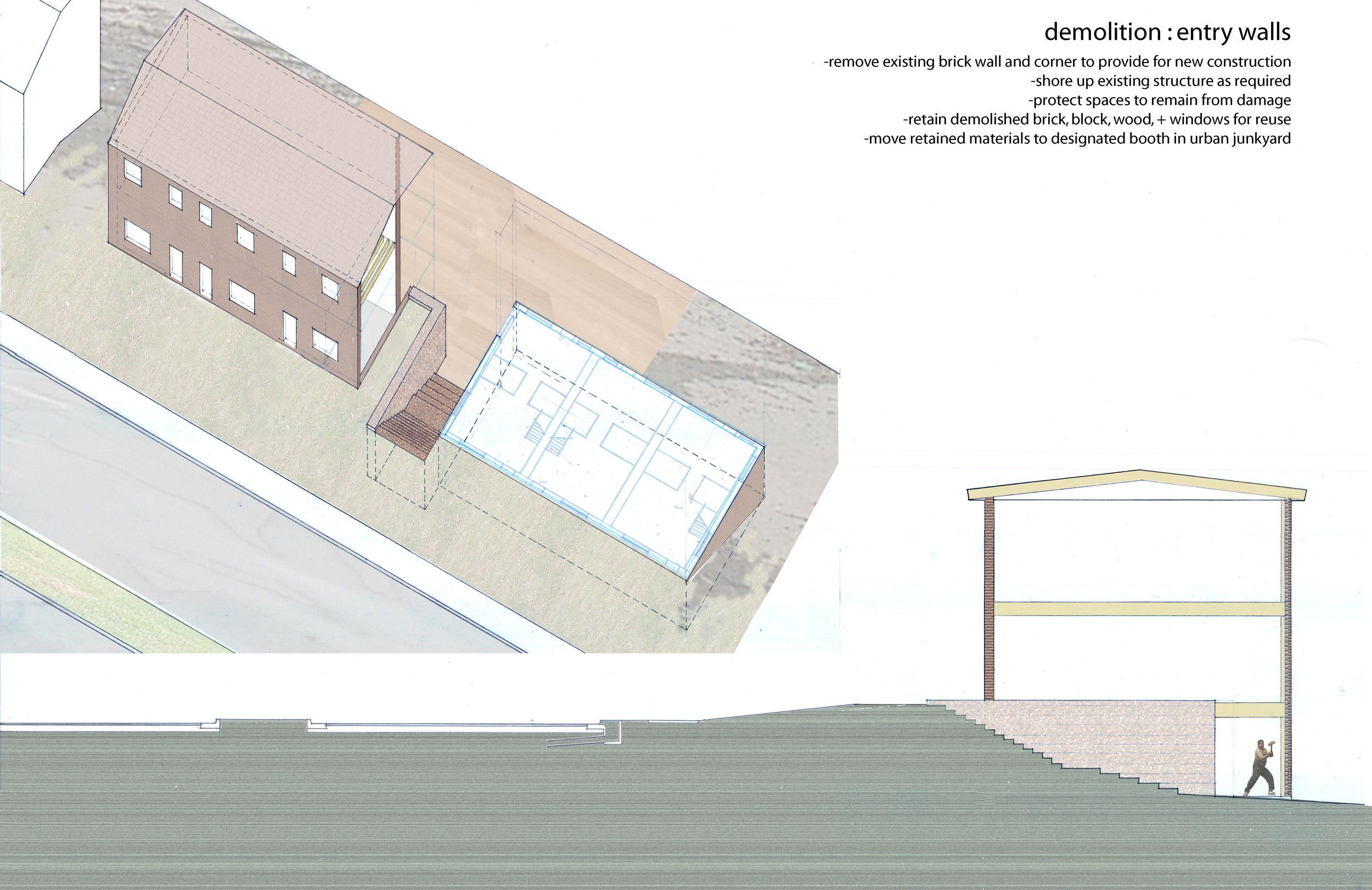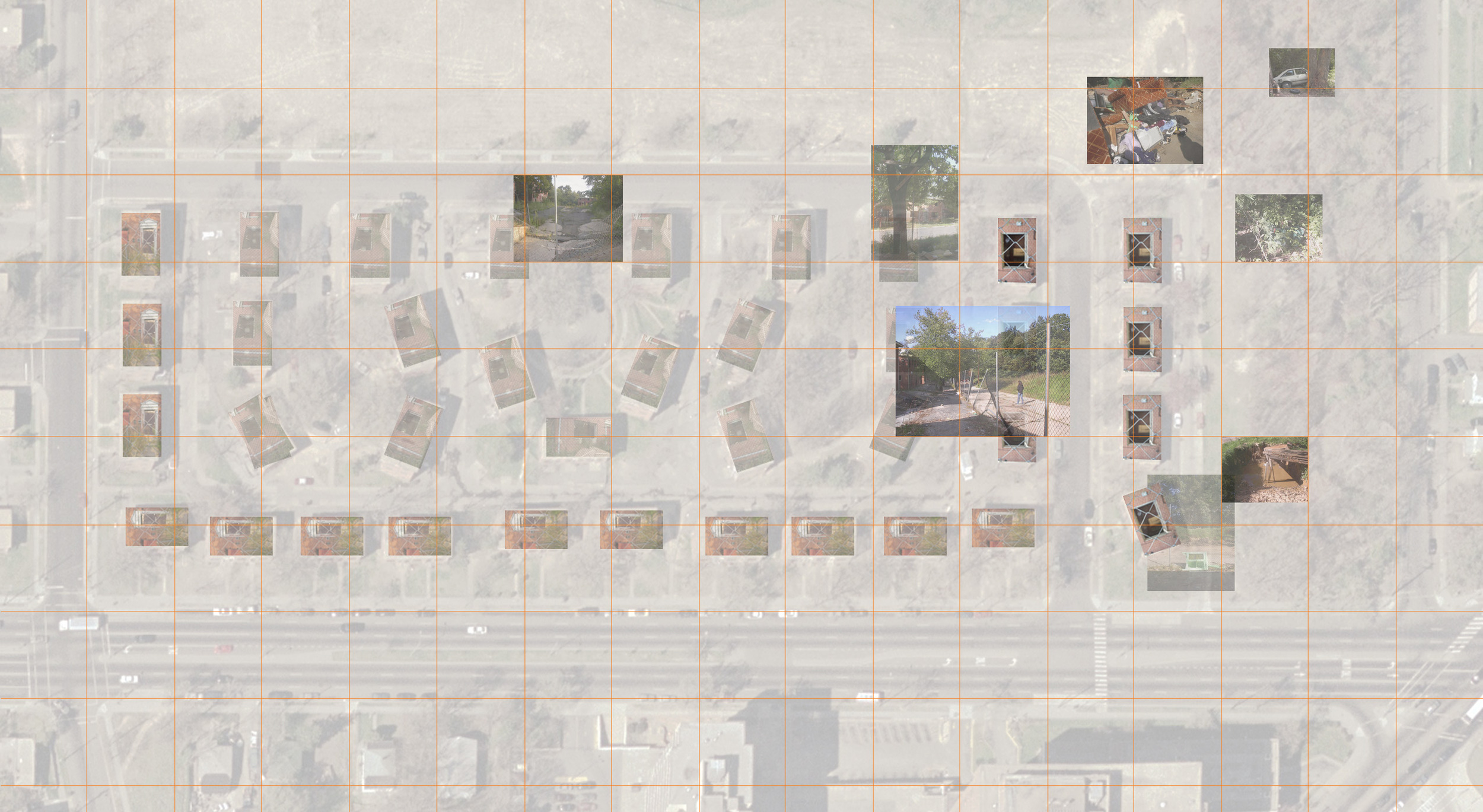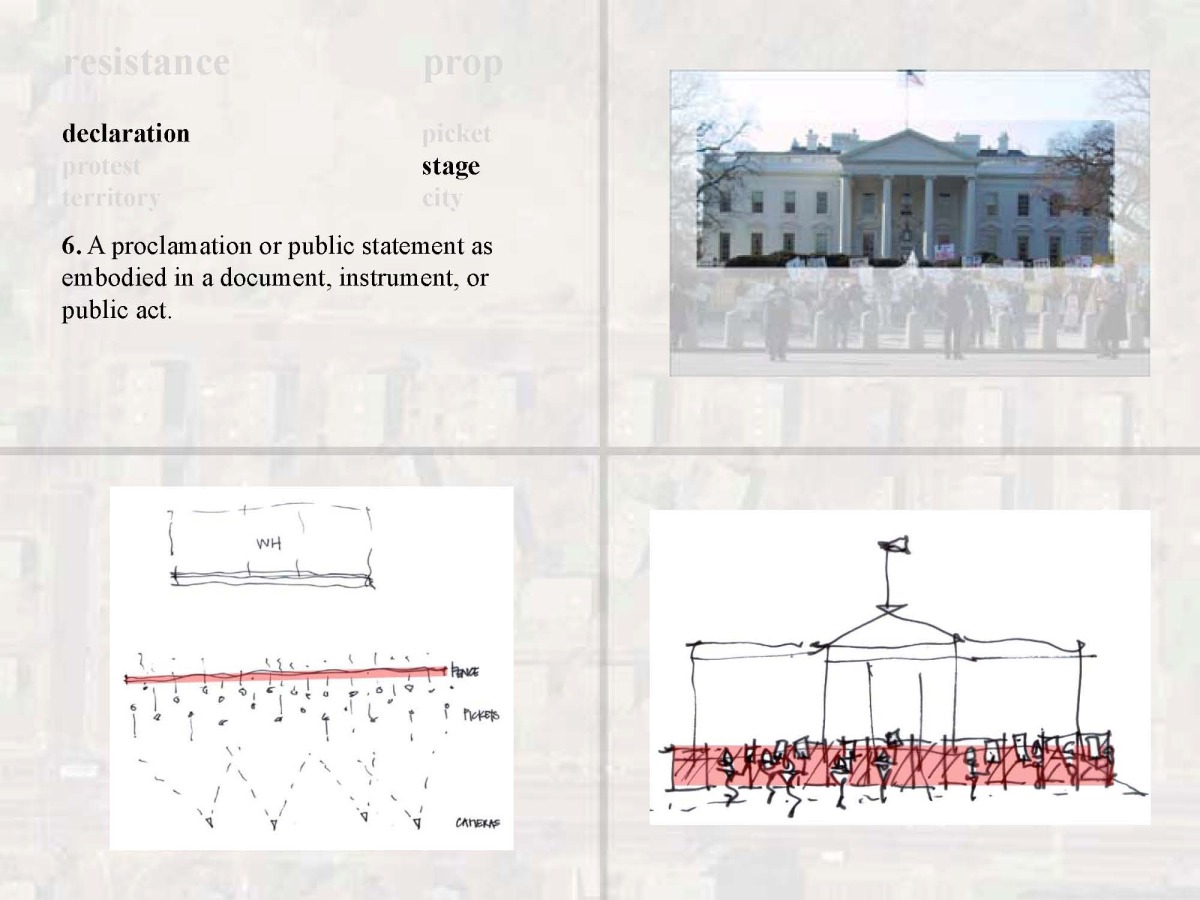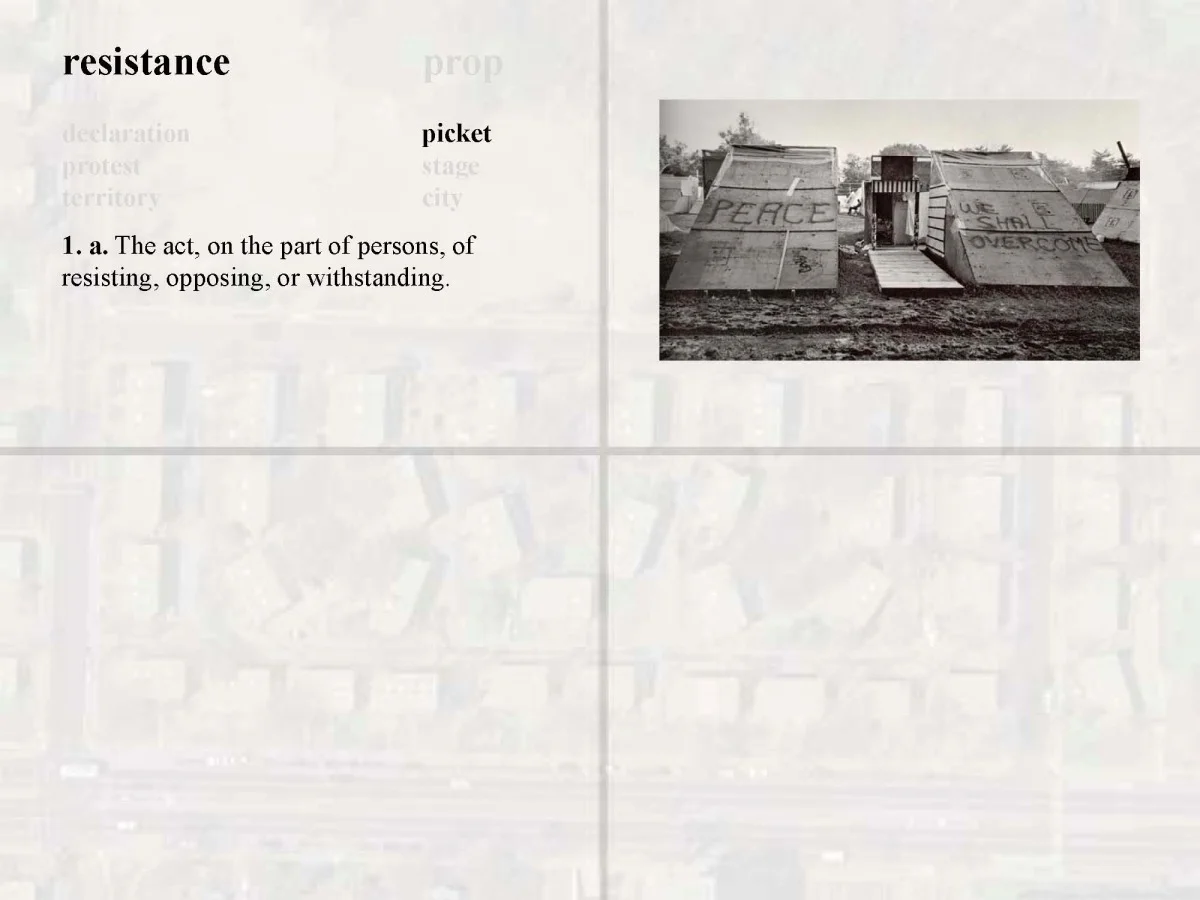CONSTRUCTING RESISTANCE: a site-based school for Watts Branch
The territory of a housing project can be reclaimed and rebuilt, rather than abandoned and demolished, through a strategy of reuse activated by a curriculum of protest. East Capitol Dwellings, an abandoned housing project along the polluted Watts Branch stream in Washington, D.C., is currently being erased to make room for a four hundred car parking lot and a big box grocery store.
In this thesis, as a protest against the clearing of the site, a school for education in the building trades is proposed at which students participate in a process of hands-on investigation. Each step in the student’s education is a crucial act in the physical transformation of the site. Lessons in grading and excavation lead to the revealing of a highly constructed, politically charged landscape and the shaping of a new ground; the creation of an urban junkyard through demolition and collection of site materials leads to a public place of exchange; exercises in masonry and carpentry facilitate a sense of ownership and encourage gathering through the creation of a shared porch.
Each of these actions is meant to subvert the existing physical conditions of the housing project, the very conditions that contribute to its abandonment and demolition. One such condition is the front door of each unit that would be indistinguishable from the back door was it not for the application of an iconic, yet false, pediment. This situation negates any connection to one’s home and allows for no threshold between the public space of the street and the private space of the dwelling. The rebuilding of these conditions is meant to take place incrementally, over a long period of time, allowing shifting needs to be realized without a single, prescribed end in mind.
This process is the means for redefining a marginalized community as the center of influence, transforming isolation into connection, and revealing resistance as a method of empowerment. In this place, protest is understood as both an affirmation of an alternative construction and a public assertion of dissent. Through the process, this thesis proposes the building of a collective identity that gives space to multiple voices, and seeks value in not only the present and future, but the past as well.


